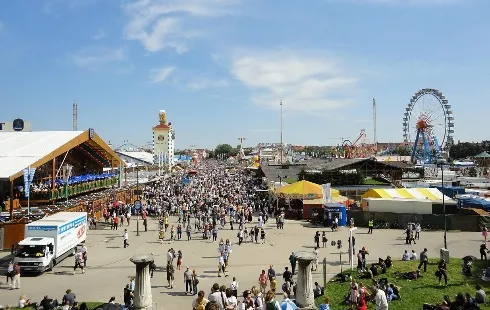
8HoursMining cloud mining platform, daily profits up to $9,337
Section: Business
In mid-August, as infection activity from the Corona pandemic slowly picked up in Germany after a quiet summer, another number reached its low for the year so far. The number of people who died from or in connection with a Corona infection dropped to 13 on a seven-day average. In some cases, deaths were even in the single digits.
The last time this was the case was in October 2020, before the second wave in Germany. An effect of the summer? Certainly not just because people in intensive care units, for example, often die only after months of fighting the virus.
The number of corona deaths remained at the low level for a week, until the end of August - only to rise steadily until today. Meanwhile, Germany is again recording more than 60 deaths on a seven-day average. On Tuesday, the number reached 96, a level last exceeded in June.Now the fact is that the number of corona deaths has risen sharply, especially after the big waves. The Robert Koch Institute (RKI) writes that deaths mostly occur two to three weeks after infection. The Interdisciplinary Association for Intensive Care and Emergency Medicine (Divi) cites a period of around two months, which then lies between a sharp increase in the number of infections overall and the rise in the number of deaths.
This was the case after the second wave, when a sharp increase in the number of infections in early November was followed by a peak in the number of deaths shortly before Christmas. And the worst-ever, third wave of infections in December was followed by the sharpest increase in deaths to date in January and February.
After the more moderate fourth wave, the effect was not quite as high: the rise in infection numbers in March was followed by quite high death numbers in April and May. The fact that the death figures already at that time were not comparable to those in the winter is attributed, among other things, to the increasing progress of vaccinations. This is presumably also a reason why the infection and death figures subsequently fell until August.
But why are the numbers rising now without a widely announced fifth wave, albeit at a low level compared to the previous waves? The RKI's answer to an inquiry from the Daily Mirror is quite simple: the institute attributes the rise in death figures to the increased number of cases and the fact that older people are still unvaccinated.
Around 85 percent of people over the age of 60 are now fully vaccinated, or 20.5 million people. But conversely, there are also 3.6 million unvaccinated people.In fact, the number of infections in Germany has been rising steadily since July - and with a delay of up to two months, so have the number of deaths. It is only since the beginning of September that the seven-day average infection figures have been falling again and are now on a kind of tableau. It is therefore possible that the death figures will continue to rise until the beginning of November. By then, around two months will have passed since the start of the rise in infection figures.
According to virologist Christian Drosten, the increase in the number of infections up to the beginning of September was not necessarily the beginning of the winter wave, but was mainly due to testing in schools after the end of the summer vacations and imported cases.Given the current rate of fully vaccinated people in the population, he expects them to roll off this year at a time like last year, Drosten said in the podcast "Coronavirus Update" on NDR-Info. At that time, he said, it was clear in the second half of October "that we were going into an exponential increase again."
Leading German intensive care physicians currently consider the number of deaths to be unremarkable. According to them, the number of deaths has always correlated with the number of treated, invasively ventilated Covid 19 patients in intensive care units. Of these, half continue to die.Thus, many of the patients who arrived in the intensive care units in August with the increasing number of infections and thus patients are probably currently dying. Since then, a plateau has formed around the 1300 to 1400 patients who are continuously treated in the ICUs.
Due to the rotation of daily new admissions, discharged and deceased patients, the number of 17 to 25 patients deceased in intensive care units per day is quite to be expected, he said. Because the number of Covid 19 patients treated in ICUs has been fairly stable since early September and to date, ICU physicians say the number of decedents will not fluctuate much in the coming weeks and months.
Full vaccination protected elderly from death
However, figures from the RKI confirm that the increase in the number of infections is already leading to a further rise in the number of deaths with a delay. These show that even small waves can have an impact on the death figures in the vulnerable age groups and that the majority of those who died in recent weeks were not vaccinated.Between early September and early October, about 1400 people in Germany died from or in connection with coronavirus. During this time, there were 144 people under the age of 60 who died from covid-19 following a vaccine breakthrough.
According to the RKI figures, a full vaccination protected people over age 60 from death in about 90 percent of cases. Among people younger than 60, there was exactly one vaccine breakthrough that resulted in death during that period.And looking at the pandemic as a whole, the picture is also fairly clear: Since the start of the vaccination campaign, 75 percent of the 722 Covid 19 cases with vaccine breakthroughs who died were 80 years and older. That reflects the generally higher risk of death - regardless of vaccine effectiveness - for this age group, the RKI writes in its current weekly report.Of all deaths during the pandemic, 80,583 people were 70 years and older. That equates to about 86 percent. On average, people were 84 years old. By contrast, only 27 validated Covid 19 deaths in people younger than 20 have been reported to the RKI so far. Pre-existing conditions were present in 18 cases.
Photo by Isaac Quesada

Section: Business

Section: Arts

Section: Politics

Section: Health Insurance

Section: News

Section: News

Section: News

Section: Arts

Section: News

Section: Arts
Health Insurance in Germany is compulsory and sometimes complicated, not to mention expensive. As an expat, you are required to navigate this landscape within weeks of arriving, so check our FAQ on PKV. For our guide on resources and access to agents who can give you a competitive quote, try our PKV Cost comparison tool.
Germany is famous for its medical expertise and extensive number of hospitals and clinics. See this comprehensive directory of hospitals and clinics across the country, complete with links to their websites, addresses, contact info, and specializations/services.
Frisch mit dem Amadeus Austrian Music Award ausgezeichnet, meldet sich OSKA mit neuer Musik und neuen Tourdaten zurück. Ihr zweites Album ,,Refined Believer" erscheint am 20. Juni 2025 und zeigt sie persönlicher und facettenreicher denn je. Noch in diesem Jahr geht sie solo auf Tour, bevor sie...



No comments yet. Be the first to comment!